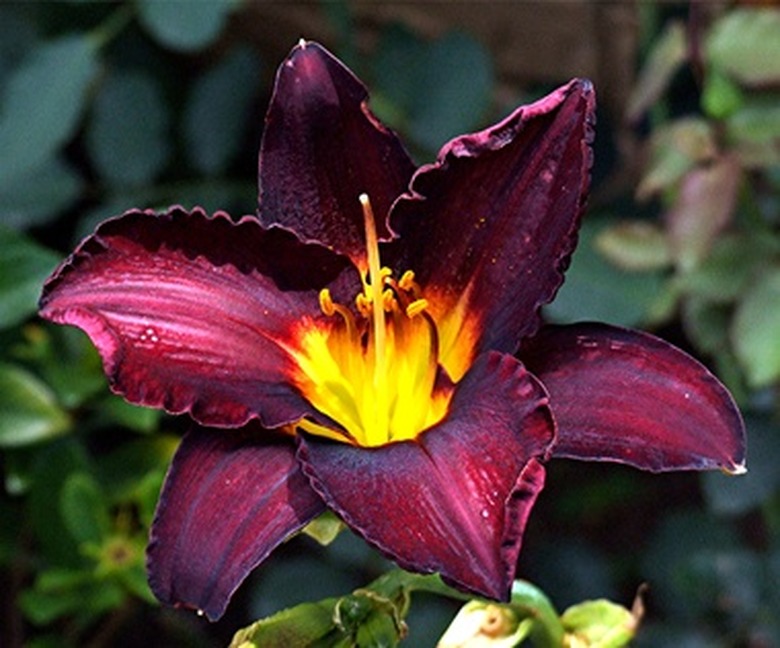Diseases & Pests Of Daylilies
Daylilies produce attractive flowers of different colors and foliage that make them ideal ground covers. These flowers are so-named because their blossoms only last for a day, although they're constantly being replaced the following day for up to six weeks, according to the Virginia Cooperative Extension website. Although pests and diseases aren't serious problems, daylilies have some challenges and need well-drained soil with plenty of organic matter.
Leaf Streak
Leaf streak is a fungal disease that's usually mistaken for poor nutrition and often ignored. Common symptoms are brown, elongated spots or streaks on leaves that have yellow borders. The fungus is first seen as dark-green transparent marks that slowly result in a leaf producing less chlorophyll. Finally, these spots radiate over an entire infected leaf that usually withers and dies. Although the disease isn't treatable, good garden hygiene can help flowers be more resistant to the fungus.
- Daylilies produce attractive flowers of different colors and foliage that make them ideal ground covers.
- The fungus is first seen as dark-green transparent marks that slowly result in a leaf producing less chlorophyll.
Bacterial Soft Rot
Bacterial soft rot, also known as crown rot, is caused from damaged roots or crowns and occurs in rhizomes and at the bases of flowers. It generally is caused from nematodes, which are microscopic worms living in the soil. A plant's foliage, crown and roots can become infected quickly, causing a daylily to become mushy and produce a foul odor. Curing the problem is difficult once an infection has taken hold of a plant, but treating the plant with streptomycin can help. Poor air circulation and soil drainage, along with high temperatures and improper fertilization can be factors for the disease developing.
Slugs and Snails
Slugs and snails affect leaves instead of flowers and are especially prone to attack daylilies in early spring when these pests feed on young, tender growth. They gather in the center of mature clumps and usually are found when a gardener digs up the clump for plant division. Common signs of slugs and snails are slimy, shiny trails on leaves. These pests hide during daylight hours in moist areas and feed at night. Practicing careful garden hygiene and using chemical deterrents can help reduce their populations.
- Bacterial soft rot, also known as crown rot, is caused from damaged roots or crowns and occurs in rhizomes and at the bases of flowers.
- A plant's foliage, crown and roots can become infected quickly, causing a daylily to become mushy and produce a foul odor.
Spider Mites
Spider mites are not insects but more related to spiders. Their piercing mouthparts puncture plant tissue as they suck chlorophyll sap from the foliage of a daylily, causing plants to turn to a dull brown with the potential of becoming fatal. Spider mites are worse during hot daytime climates or where plants don't receive enough water. These insects are almost invisible as they are capable of covering a leaf's surface with fine webbing.
Flower Thrips
Flower thrips, which are serious pests to daylilies, are dark-colored, slender insects with fringed wings. They're usually found on leaves or between flower petals. When flower thrips feed on flower buds, they cause flowers to die without opening. A minor infestation causes the leaves to have steaks or silver speckles, while a severe one causes leaves to turn brown and die.
- Spider mites are not insects but more related to spiders.
- These insects are almost invisible as they are capable of covering a leaf's surface with fine webbing.
